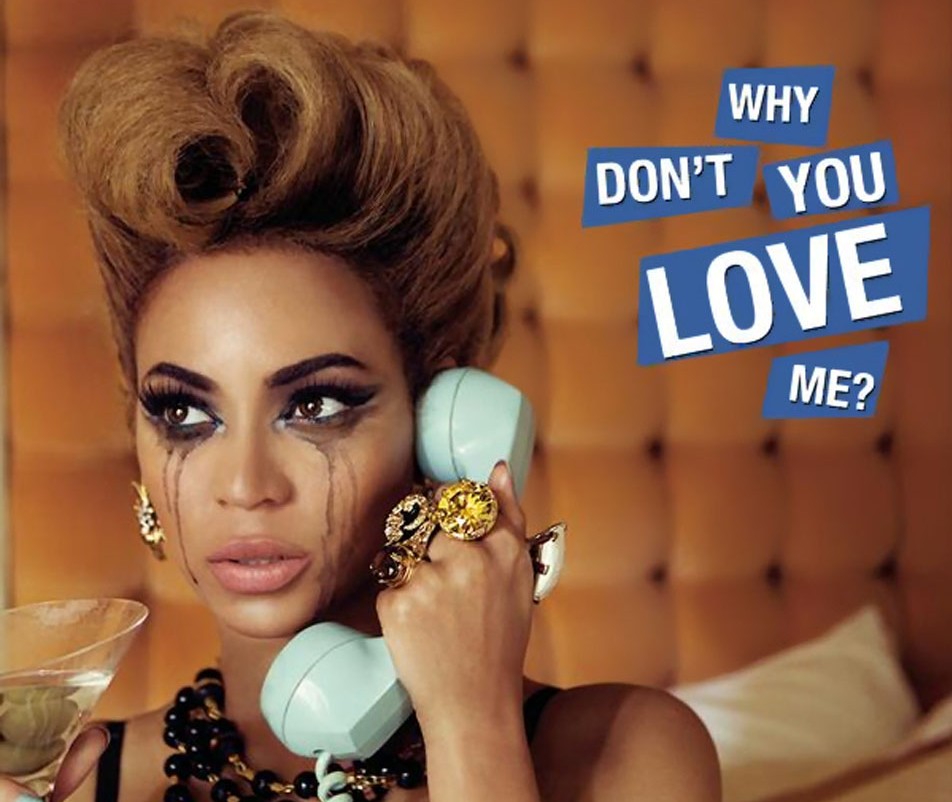Music
Video Vultures: 20th century idolization

In Video Vultures, Cory Clifford takes a look at different music videos then ties them together through musical, political and cultural similarities.
Rockabilly looks, classic cars, pinups, and several other remnants from the past all seem to, despite timelessness in each thing anyways, mozy their ways into a decade’s culture. They find ways to stick around until they create a new generation of subcultural dwellers. Tarantino has done marvels with the mid-20th century in several of his films, while still keeping things fresh and modern. And in fashionable waves, heart-shaped sunglasses, and greased-back hair-dos seem to always be there for any generational to try. So why do we keep revisiting that era? Why do we hold a consistent idolization for one of America’s darkest, scariest and most conflicting times? Well, let’s take a look at some videos, shall we?
The queen-bee, Beyonce, has pulled off former eras before, most famously with her disco-influenced “Work It Out” from the Austin Powers in Goldmember soundtrack. But Beyonce donned former rags more recently, with her 50s pinup/feminist statement vid, “Why Don’t You Love Me.”
The video for “Why Don’t You Love Me” shows Beyonce as the working “housewife,” in various roles of household duties. The song is empowering enough, but the video really puts things in full perspective as Beyonce mocks the 20th century expectations of submissiveness and the stay-at-home role of a bygone era, while still looking retroactively sexy.
Does anyone remember when Neil Young put out a rockabilly album? No? Well, me neither; it came out a handful of years before I was born, but I’ve heard gripes about it from several Neil Young fans, and how “the 80s were bad to a lot of 70s rockers, but especially bad to Mr. Young.” His 1983 rockabilly album Everybody’s Rockin’ (filled with covers and a few originals) is really quite a sustainable and interesting album in the Canadian singer-songwriter’s discography. Most importantly, one of Neil’s more memorable videos for the album-single “Cry Cry Cry,” perfectly encapsulates the motif and tribute he was attempting to show off.
And of course, we can’t forget about the awesomeness of Outkast’s 1950s high school-drama music video for “Roses.” The duo had already paid tribute to the era with the American Bandstand-mocking “Hey Ya” video, but the group really nailed it with the auto club, stage productions, and Little Richard-like presence of Andre 3000’s outfit.
So if the mid-20th century is so controversial, why is its culture constantly revisited? Let’s start by thinking about the era itself. 1950s and early 1960s-America were filled with five things, most notably: racism, sexism, communist paranoia, a commercial appeal towards rebellion, and a sudden overzealousness towards autos of all makes, types and sizes. But the things that stick out most tend to be the least political and serious in modern minds. That mid-century rebellion, from Elvis Presley and Chuck Berry to Rebel Without A Cause and Frankie Avalon movies, is really arguably the most memorable thing about America back then. Remembering the hot rod cars, the scandalous female clothing and the downright bad attitudes and outlooks in the popular greaser culture of the time, these are all images that tend to stick out the most when people are emulating the era.
That iconization of a time where young people were literally and figuratively saying “fuck you” to the system that was set up for them, is ultimately why people love that era. Of course, rebellion has happened in waves throughout history, but mid-20th century America showed for the first time how influential a bunch of pissed off teenagers really could be. It was the only thing the government worried about almost as much as communism in those days. That lineage that the adults had set up for their children of that time, had failed and there was not much to do but play the blame game. So they did. And the youth of today, and several other generations since, have never been able to get over how beautiful and daring the youth of that era really were.
Sure, it’s one-part dressing up in “funny” clothes, but there’s a certain sense of “badass”-ness people commonly associate with rock ‘n roll and greasers. That sense of danger sticks out of every corner in a lot of culture of that time, and it for once showed commercial acknowledgement of children, most importantly children who are bad. While Beyonce’s video certainly makes a bolder, much more important statement than the other two, even her ensembles show off the Bettie Page-ness of pin-ups in those days, and how for the first time they showed women in masses dressing “sexy” and “flirty.” Now of course, with overwhelmingly controversial instances at hand, it’s very difficult to idolize the era as a whole. But America will hopefully continuously revisit and renew the cultural importance of the mid-20th century as it was one of the most rebellious and exciting times in American history.